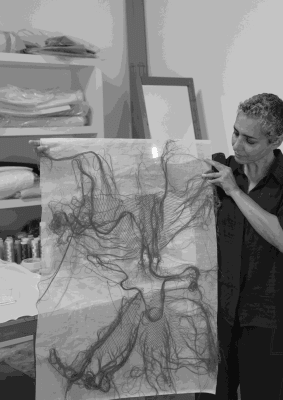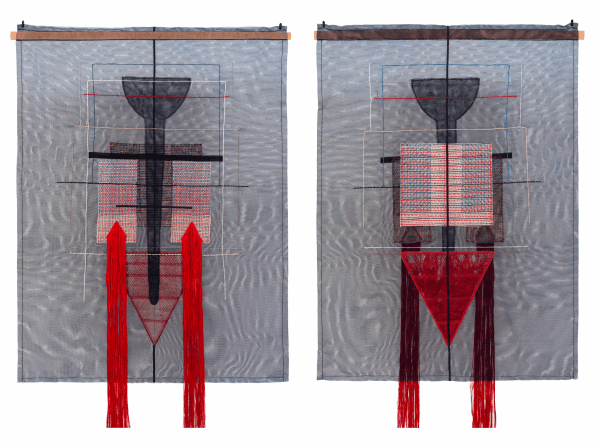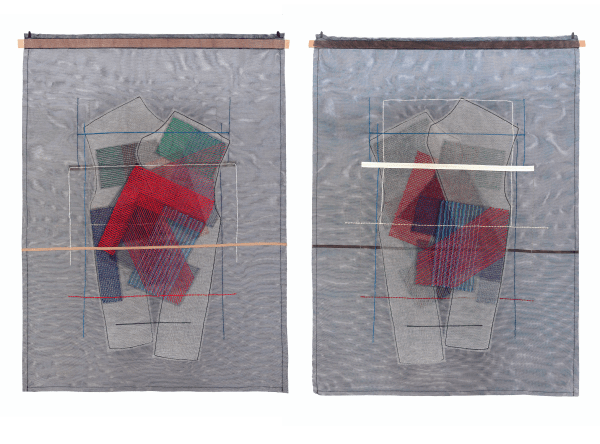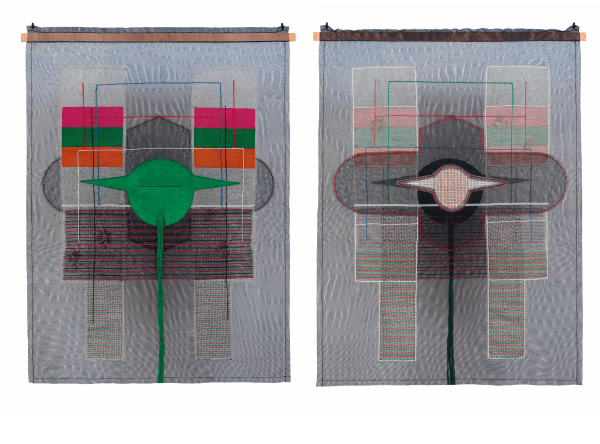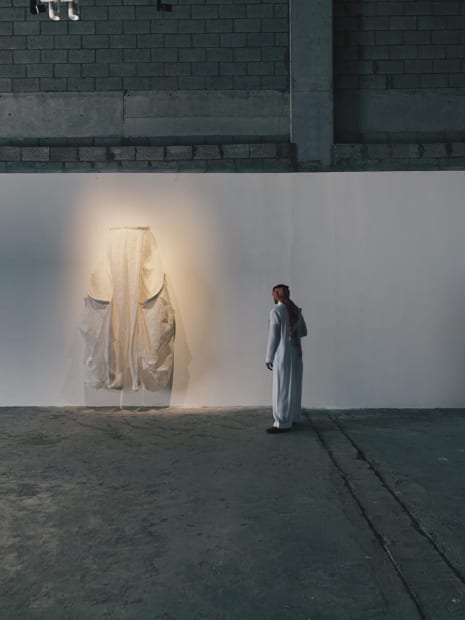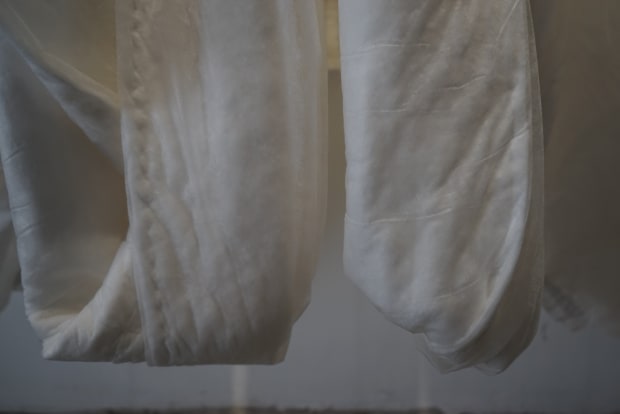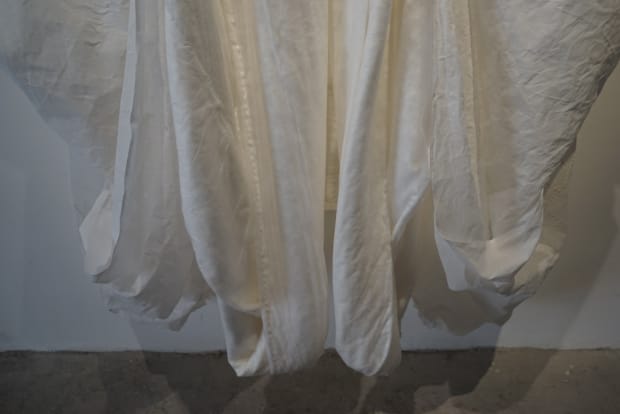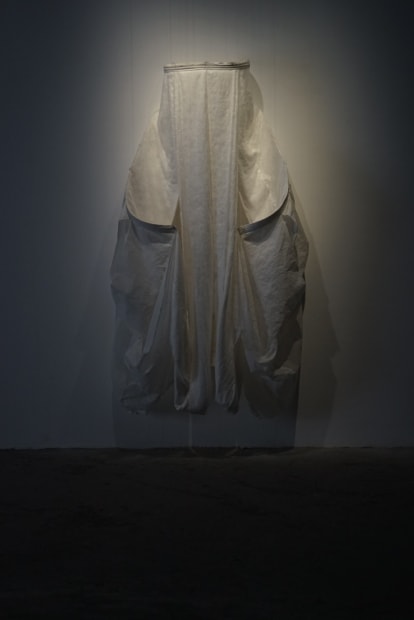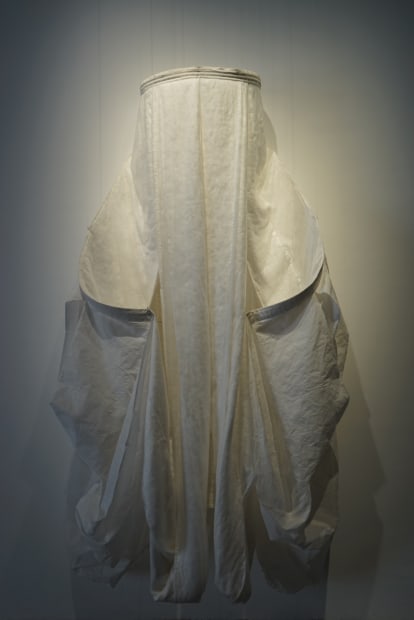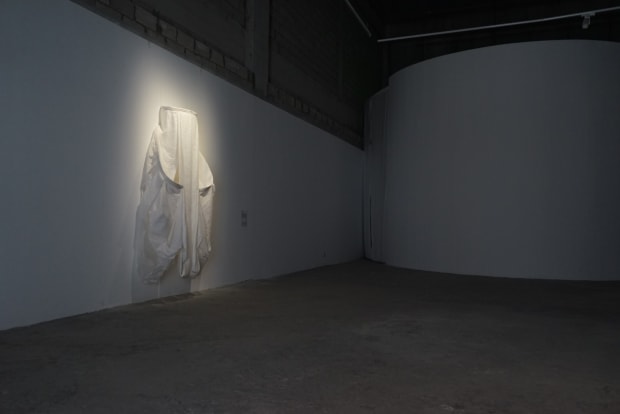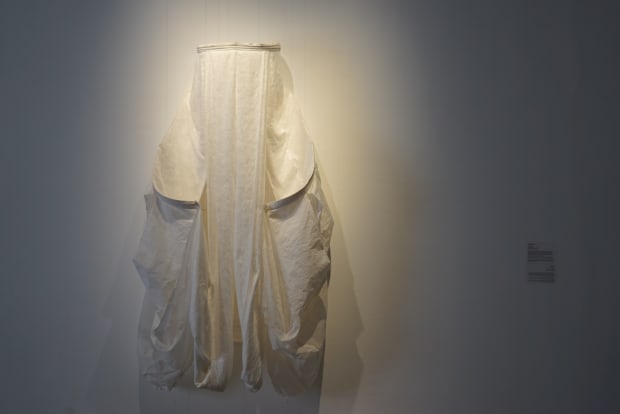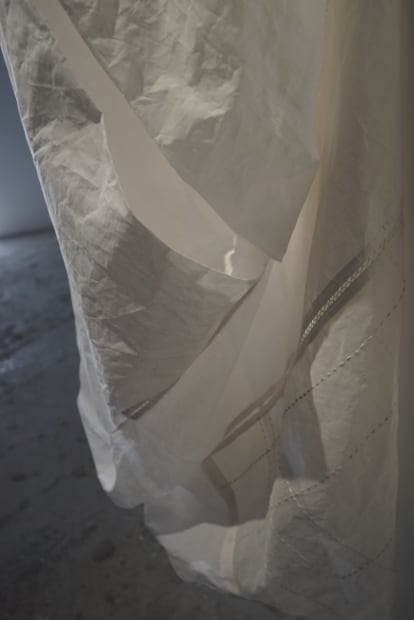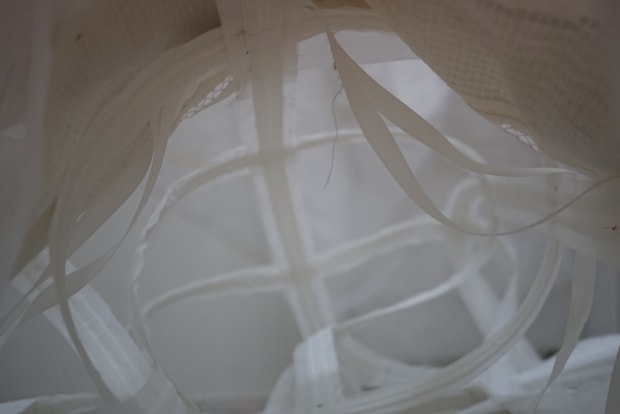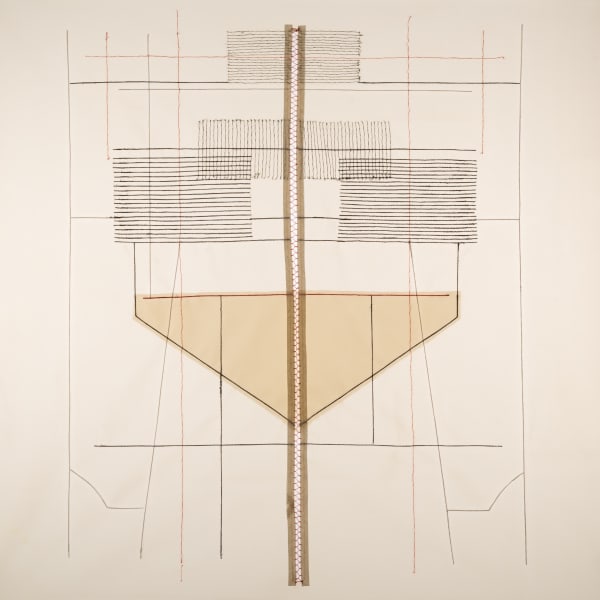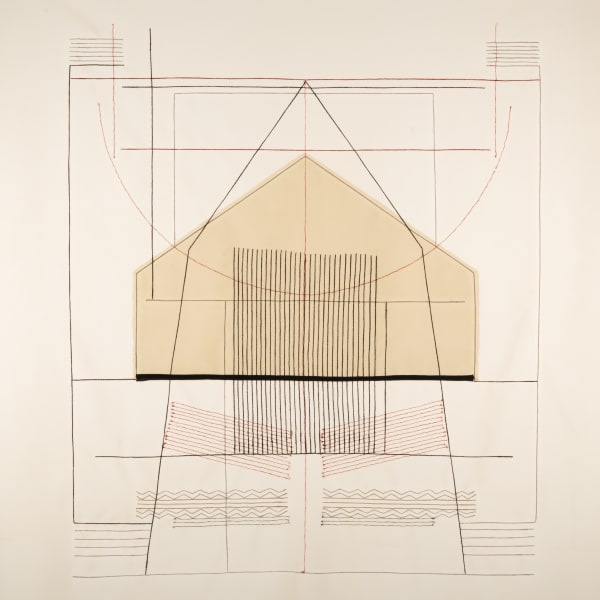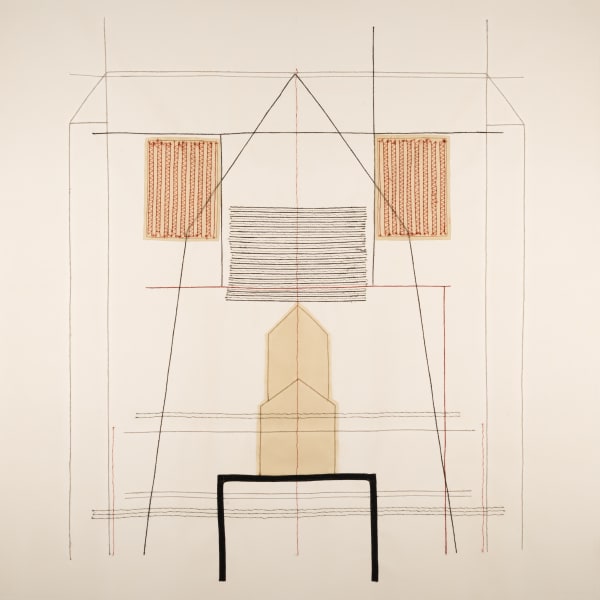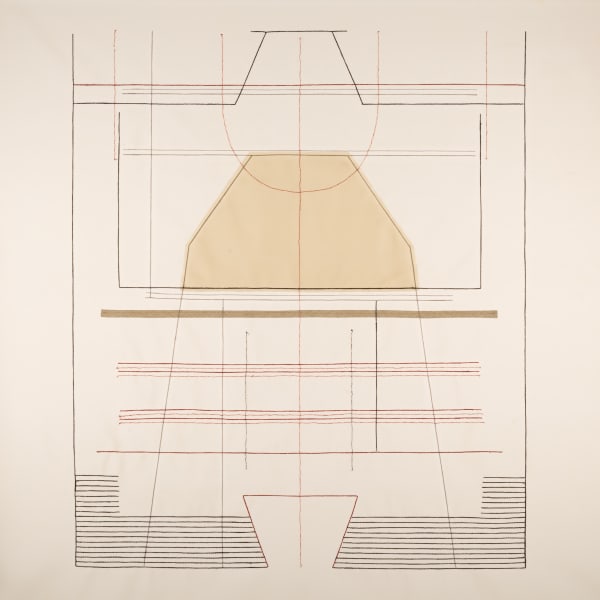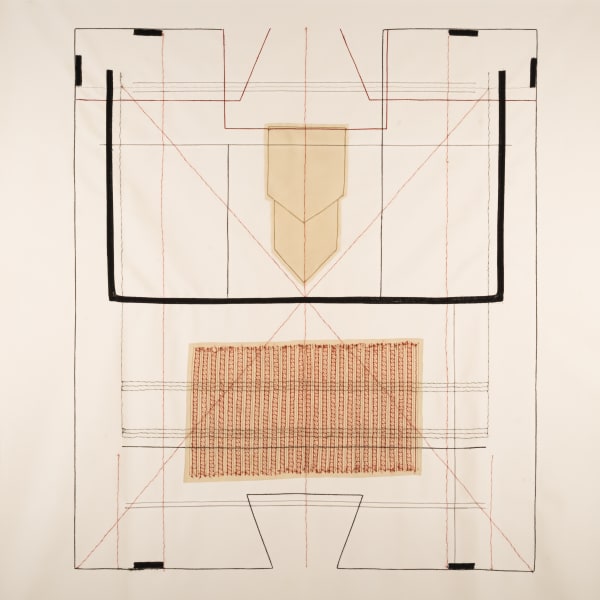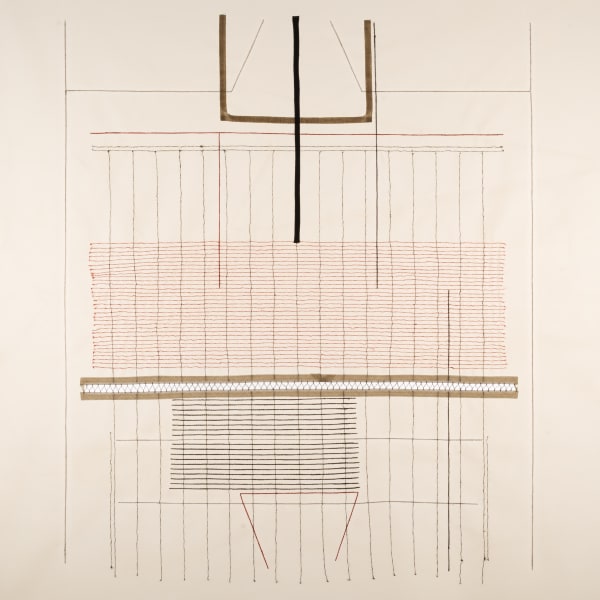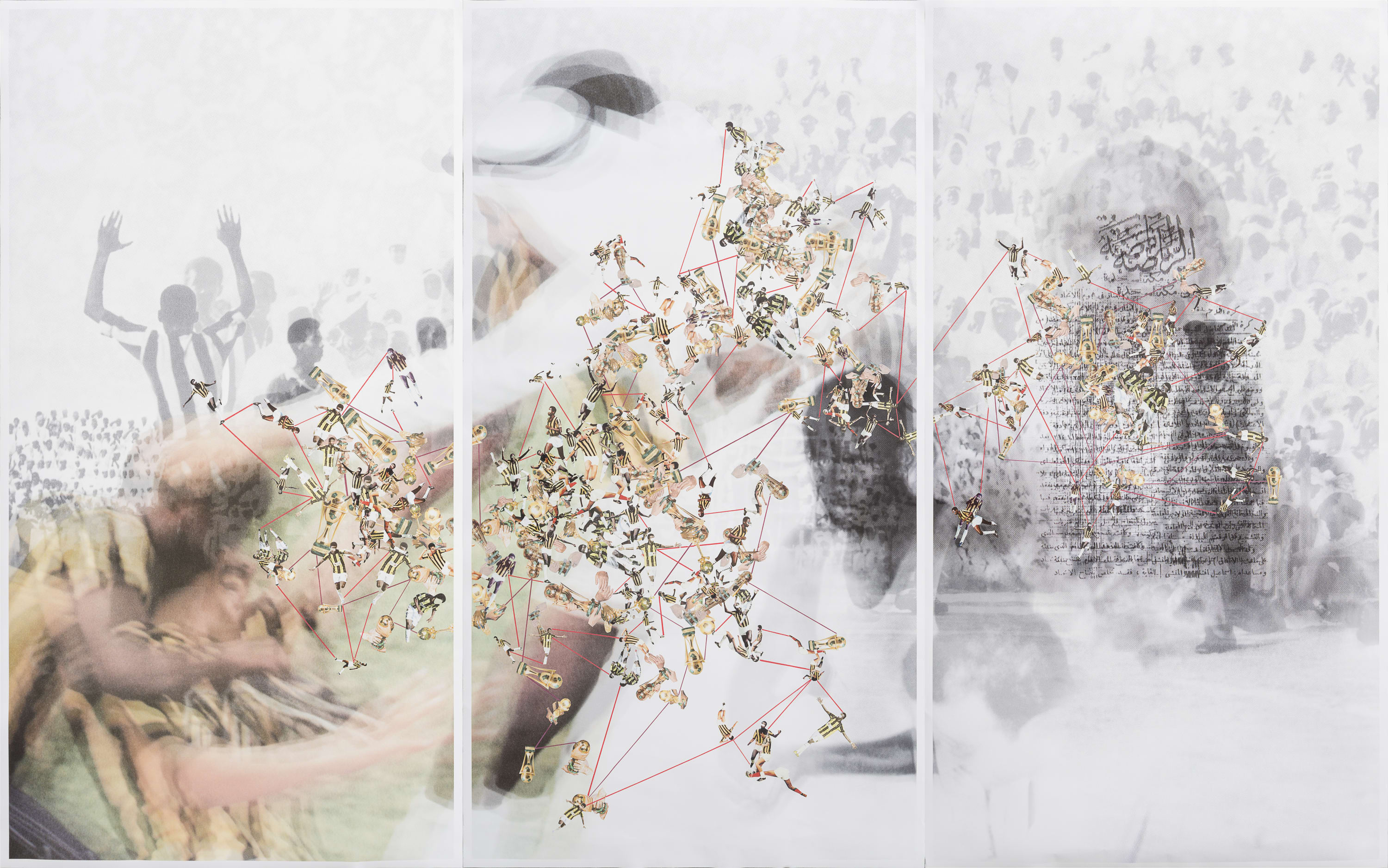Born 1972 in Swansea, United Kingdom , Lives and works in Jeddah, Saudi Arabia
Filwa Nazer is a Saudi multi-media artist. She lives and works in Jeddah.
Nazer began her creative journey as a fashion designer and graduated from Milan’s Marangoni school of Fashion and design. Her practice ranges from digital print, collage, textile to appropriation of photography and centers around questioning the emotional and psychological identity in relation to spatial and social contexts.
In her recent practice the artist employed textiles and sewing techniques as a medium to explore relationships between our bodies & the spaces we occupy, thus unveiling an intimate experimental process that reflects the tensions inherent in both.
Filwa participated in several exhibitions which include: State of Fashion Biennale, Holland (2024), DESERT X, Al Ula (2024), “Perceptible Rhythms, Alternative temporalities“ Middle East Institute Washington (2022), La Biennale de Lyon, France (2022) , Diriyah Biennale (2021) , “Saudi Modern “ Jeddah (2021).
-
Ambivalent Bodies
Commissioned by Saudi Ministry of Culture ‘’Woven Spaces “ exhibition -
-
Five Women
Commissioned by Diriyah Biennale Foundation -
The In-Between Project : Tactile Mapping | The Other is Another Body
Commissioned by Sharjah Art Foundation for March Project 2019Filwa Nazer examines the relationships between our bodies and the spaces we occupy, seeking to give physical form to our subjective experience of the energetic and psychological dimensions of these spaces. For her site specific installation in the heritage house, Bait Al Hurma , the body becomes a projection of the physical space of the house and a container for it’s energy. The space, triggers feelings of exposure , vulnerability and the lack of intimacy and protection. Nazer attempts to trace the imagined presence of the women who inhabited the house by layering shapes and lines from the architectural plans of the space as well as patterns from the garments and traditional clothing they presumably wore on fabric and latex.
Comprising two bodies of work, Nazer’s In-Between represents a space of transformation and becoming ;
It is the space in the middle of the inside and outside, between subjectivity and objectivity, intimacy and hostility, connection and separation. Tactile Mapping consists of six latex works, which echoes the vulnerability of Bait Al Hurma through works sewn and embroidered on latex that are stretched across various niches in the house. The Other is Another Body , consists of two large-scale black netting sculptures positioned in the center of the heritage house courtyard, a vertical manifestation of an awkward becoming. -
Tactile Mapping Series
Commissioned by Sharjah Art Foundation I Saudi Ministry of Culture collection, Riyadh -
Anatomy of winning’
Commissioned by Saudi Art Council For 2139 Jeddah Art exhibition ‘Refusing to be still’, Curated by Vassilis Oikonomopoulos“Anatomy of winning’’ is a three-panel work on paper that shows indistinct historical images relating to the pioneering Saudi football club Al- Ittihad, layered in parts with collage of images of footballers and images of handling of trophies and cups. The sharp images of the collage contrast and interrupt the almost abstract flow of the background and create tension in the visual narrative.
Hailed as the people’s club; Al-Ittihad Popularity transcends class and ethnicity and mirrors the city of Jeddah’s root identity of multiculturalism and openness.
Reflecting on the club’s history, its glories and struggles, and how it consistently mirrored Jeddah’s social fabric and socio-political and economic influences; the artist raises questions of identity, and whether the values that were at the heart of both Jeddah and the club early on are still relevant today.
